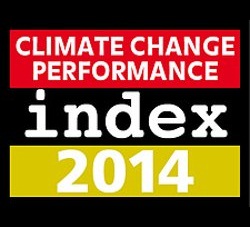 Editorial by Achim Steiner, UN Under-Secretary General and UNEP Executive Director, Published in the Official Newsletter of the G-20 Summit.
Editorial by Achim Steiner, UN Under-Secretary General and UNEP Executive Director, Published in the Official Newsletter of the G-20 Summit.
“With plans to decrease deforestation and reduce carbon emissions worldwide, the Copenhagen Climate Summit has made some valuable steps forward.
The Copenhagen Climate Summit was neither the breakthrough so many had hoped for nor the breakdown that seemed possible in the late hours of that final day in December 2009.
Despite the pessimism in the press, forward steps were taken. If fully implemented, they could go a long way toward keeping a global temperature rise to 2°C or less by 2050.
Much credit must go to rapidly developing countries including Brazil, China, Indonesia and South Africa. They produced plans to tackle their emissions and have had these plans internationally monitored and verified. For the first time in the history of international cooperation on climate change, there is a voluntary partnership between North and South backed by emission targets and intentions. Indeed, more than 100 countries associated themselves with the Copenhagen Accord.
Developed countries pledged $30 billion of climate support to developing economies and said those funds would lead to perhaps $100 billion in annual funding by 2020. The $30 billion, over three years, will assist developing economies adapt to climate change. It will also catalyze a transition to a low carbon economy based on cleaner energy systems.
Perhaps the brightest outcome of Copenhagen relates to forestry. Up to 20 per cent of global greenhouse gas emissions are linked to deforestation. Paying developing economies to conserve rather than chop down their forests could curb these emissions and generate important benefits to local and national economies. Such benefits include enhanced water supplies, soil stability, employment in natural resources management and reversing the rate of biodiversity loss – an elusive target that was to have been met during this year’s United Nations International Year of Biodiversity.
Indonesia could earn up to $1 billion annually if it halved its rate of deforestation under current, relatively low prices for carbon; it could earn more if greater efforts to curb emissions drive the price of carbon higher.
The United Nations Environment Programme (UNEP), the UN’s Food and Agriculture Organization (FAO) and the UN Development Programme (UNDP) are spearheading the UN Collaborative Programme on Reducing Emissions from Deforestation and Forest Degradation. Recognizing the value of natural systems in combating climate change is an extremely promising path, because of the mitigation as well as adaptation services provided by such systems. One area is sustainable agriculture, including organic agriculture. Organic agriculture triggers sharply polarised views: some consider it the luxury of the rich; others suggest it can play a far wider role.
Research by UNEP and the UN Conference on Trade and Development (UNCTAD) on projects in Africa where smallholders had switched to organic or near organic practices found that yields more than doubled after the switch. That increase was 128 per cent in East Africa. Organic agriculture also locks carbon into soil. In collaboration with the World Agroforestry Centre and a group of scientists, UNEP recently launched the Carbon Benefits Project to assess how much carbon is sequestered in soils and vegetation under different land management regimes. The goal is to establish a standard so an investor in Frankfurt or London or Singapore or New York will know how much to pay a farmer or landowner for the carbon removed from the atmosphere. While the adaptation potential of mangrove forests as natural coastal defences may be known, the carbon removing services are not. Experts estimate that carbon emissions – equal to half the annual emissions of the global transport sector – are captured and stored by marine ecosystems such as mangroves, salt marshes and sea grasses.
But according to UNEP’s Blue Carbon Report released before Copenhagen, far from maintaining and enhancing these natural carbon sinks, humanity is damaging and degrading them at an accelerating rate. It estimates that up to 7 per cent of these ‘blue carbon sinks’ are lost annually, or seven times the rate of loss of 50 years ago. There is now a proposal for a Blue Carbon fund like the one for forests that could tip the economic balance in favour of conservation.
Earlier this year UNEP, in collaboration with Indonesia and other UN agencies, launched a science assessment project to bring even greater precision to the carbon sequestration potential of marine ecosystems. Additional scientific support from G8 and G20 countries is welcome. All eyes are now on the next climate convention meeting in Cancun in November and December 2010. The G8 and the G20 can – along with other forums – play an important part in the chances for success there.
Despite some significant moves forward in terms of emissions, Copenhagen has left a gap between where science says emissions need to be in 2020 – to limit the temperature rise to 2°C or less in 2050 – and where they stand today.
This is the conclusion of a new greenhouse gas modeling study based on the estimates of researchers at nine leading centres, compiled by UNEP and launched in February. The experts suggest that annual global greenhouse gas emissions should not be larger than 48.3 gigatonnes (Gt) of equivalent carbon dioxide in 2020 and should peak sometime between 2015 and 2021.
They also estimate that global emissions need to fall between 2020 and 2050 by between 48 per cent and 72 per cent. Consequently, greenhouse gases must be cut by 3 per cent annually over that 30-year period. Yet the researchers found that even with the best intentions there is a gap of between 0.5 Gt and 8.8 Gt of carbon dioxide equivalent per year, amounting to an average shortfall in emission cuts of 4.7 Gt. If the low end of the emission reduction pledges are fulfilled, the gap is even bigger: 2.9 Gt to 11.2 Gt of carbon dioxide equivalent per year, with an average gap of 7.1 Gt.
Many assumptions lie behind these figures, not least about actual growth rates of rapidly developing economies over the next decade and the consequent emissions. Nevertheless, higher ambition, especially among developed economies, is needed – fast. Contributions could also come from including emissions from aviation and shipping in pledges and plans.
The good intentions of countries such as Brazil and Indonesia are also linked to financing. This underlines the urgency of turning the $30 billion pledged into investments on the ground. That transformation could go a long way toward building the practical and political confidence and cooperation that took a blow at Copenhagen.
Many developing countries will need clear, transparent reassurance that developed economies are providing new money, rather than repackaged pledges or funds perted from aid or other existing budgets. Investment in renewable energies and forestry can also support the carbon markets in advance of an international agreement on climate change.















